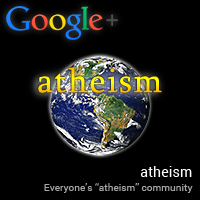 Logic is a natural and useful intellectual/scientific tool for testing the consistency of our understanding of concepts and ideas, claims and assertions, hypotheses and theories (both scientific and colloquial), casual day-to-day decision-making, etc., and is an essential part of mathematics, science, engineering, philosophy, law, cooking, art (music, writing, painting, etc.), plus many other professional disciplines.
Logic is a natural and useful intellectual/scientific tool for testing the consistency of our understanding of concepts and ideas, claims and assertions, hypotheses and theories (both scientific and colloquial), casual day-to-day decision-making, etc., and is an essential part of mathematics, science, engineering, philosophy, law, cooking, art (music, writing, painting, etc.), plus many other professional disciplines.
- Symbolic keymap
- ¬ = is not (negation)
B = belief/believing (psychological)
D = deity/deities (a deity is a goddess or a god)
K = knowledge/knowing (epistemological)
Note: Parenthesis clarify logical grouping.
Hereunder, the symbolic keymap (above) clarifies the meanings of select vocabulary that is used in public discourse, linguistic research, philosophical debate, epistemological exploration, etc.
| These particular words of interest are: atheism, anti-theism, and theism, all of which pertain to the psychological state of belief. | |
| ¬(BD) | atheism: "not believing in deities" is more commonly known as the "absence of belief in deities" and can be accurately characterized by the statement "I don't believe in deities."
The ¬ symbol indicates "not" (or, in this case, "absence" in accordance with the "a-" prefix which means "without") while the B and D symbols inform us that "belief in one or more deities" (theism) is the subject at hand. |
| B(¬D) | anti-theism: "belief that there are no deities" is a position that is diametrically opposed to belief in deities (theism; see next entry).
The B symbol indicates "belief" while the ¬ and D symbols inform us that "no deities" is the subject at hand.
|
| BD | theism: "belief in one or more deities" is a position that is diametrically opposed to belief that there are no deities (anti-theism; see previous entry).
The B symbol indicates "belief" while the D symbol informs us that "deities" is the subject at hand (note that monotheism is "belief in a single deity" and polytheism is "belief in multiple deities"). |
Occasionally, the subject of epistemology arises, but this is a non-sequitur that adds unnecessary confusion since atheism, anti-theism, and theism address a psychological characteristic without venturing into epistemological aspects. The following entries included here resolve this confusion:
| These particular words of interest are: agnosticism, and gnosticism, both of which pertain to the epistemological subject of knowledge. | |
| ¬(KD) | agnosticism: "not having knowledge about deities" (or, more accurately, the "absence of knowledge about the mystical") is more commonly characterized by the statement "I don't know if deities are real" hence the most commonly-used context tends to emphasize "deities" which, by definition, are mystical. (If utilized as a knowledge-position, agnosticism is normally rooted in skepticism wherein it may also be characterized by the proposition "it's not [presently] possible to know whether deities exist.")
The ¬ symbol indicates "not" (or, in this case, "absence" in accordance with the "a-" prefix which means "without," and also understood by Professor Thomas Huxley as he relied on its meaning when in the late 1800s CE he famously coined the term "agnostic" that contrasts with "gnostic") while the K and D symbols inform us that "knowledge about one or more deities" (gnosticism) is the subject at hand. |
| KD | gnosticism: "knowledge of one or more deities" (or, more accurately, "knowledge of the mystical") is a knowledge-position most commonly focused on "deities" which, by definition, are mystical.
The K symbol indicates "knowledge" while the D symbol informs us that "deities" is the subject at hand. |
In summary, while atheism (a.k.a., "not theism") is a psychological state of "not believing in deities," it differs from agnosticism (a.k.a., "not gnosticism") which is the epistemological subject of "not having knowledge about deities."
Propositional logic
| Proposition: I believe that one or more deities are real | |
| accept | not accept |
| (agree) (believe) (theist) |
(don't agree) (don't believe) (atheist) |
In propositional logic, the casual question "Do you believe in any deities?" (which may be expressed as "I believe in one or more deities") seeks to yield a response of acceptence or non-acceptence since the objective of propositions is to confirm only the validity of a given proposition. (When using truth tables to document responses to propositions, "true" commonly indicates acceptance while "false" indicates non-acceptance without implying some other position, including an opposite position {even if a dichotomy is central to the proposition}.)
Although a theist will "accept" the proposition, we can't discern from this response whether the theist is also a monotheist or a polytheist since confirming the proposition doesn't address the number deities, so at best we can only deduce that they are a theist (of which monotheists and polytheists are the two possible subsets).
Although an atheist will "not accept" the proposition, we can't discern from this response whether the atheist is also an anti-theist because their answer doesn't address anti-theism, so at best we can only deduce that they are an atheist (of which anti-theists are a possible subset).
| Proposition: I believe that deities are not real | |
| accept | not accept/td> |
| (agree) (believe) (anti-theist) |
(don't agree) (don't believe) (theist or atheist) |
Although an anti-theist will "accept" the proposition, it comes as no surprise that both theists (because they believe in one or more deities), and atheists who don't also take the anti-theistic position, will "not accept" the proposition.
| Proposition: I know that one or more deities are real | |
| accept | not accept |
| (agree) (know) (gnostic) |
(don't agree) (don't know) (agnostic) |
Although a gnostic will "accept" the proposition, in contrast an agnostic will "not accept" it.
Excluded Middle, the principle of
 The Principle of the Excluded Middle is a well-known logical law that asserts that a logical statement can only be "true" or "false." While this law is useful, the law itself is not exempt from causing false dichotomies when applied where more than two options are logically valid possibilities (as is the case with traffic lights), and so in the spirit of striving for objectivity it is important that practitioners of logic be aware of the risk of bifurcated thought that can arise from unnecessarily or illogically excluding additional options and/or positions (as can occur in classical logic where a "false" response to a disjunctive syllogism is incorrectly interpreted as an affirmative denial that infers an opposing position).
The Principle of the Excluded Middle is a well-known logical law that asserts that a logical statement can only be "true" or "false." While this law is useful, the law itself is not exempt from causing false dichotomies when applied where more than two options are logically valid possibilities (as is the case with traffic lights), and so in the spirit of striving for objectivity it is important that practitioners of logic be aware of the risk of bifurcated thought that can arise from unnecessarily or illogically excluding additional options and/or positions (as can occur in classical logic where a "false" response to a disjunctive syllogism is incorrectly interpreted as an affirmative denial that infers an opposing position).
 As a straight-forward example, a false dichotomy arising from the incorrect application of the "excluded middle" can be demonstrated with a basic system of signal lights on a motor-vehicle. While these signal lights are best known for communicating the driver's intention to perform a left-hand or right-hand turn or lane change, limiting the options to "left" and "right" signalling is a false dichotomy because it unnecessarily excludes the default of "not signalling." Additionally, a well-known fourth option of "hazard lights," which utilizes both sets of signal lights simultaneously, is used to indicate a temporary full stop due to a mechanical breakdown, etc.
As a straight-forward example, a false dichotomy arising from the incorrect application of the "excluded middle" can be demonstrated with a basic system of signal lights on a motor-vehicle. While these signal lights are best known for communicating the driver's intention to perform a left-hand or right-hand turn or lane change, limiting the options to "left" and "right" signalling is a false dichotomy because it unnecessarily excludes the default of "not signalling." Additionally, a well-known fourth option of "hazard lights," which utilizes both sets of signal lights simultaneously, is used to indicate a temporary full stop due to a mechanical breakdown, etc.
Along this line of thought is that "not believing that deities exists" (atheism) is distinctly different from "believeing that deities do not exist" (anti-theism) and its opposite of "believing that one or more deities do exist" (theism). While the former does not carry a burden of proof since it is not an assertion, a belief, or a claim; the remaining two are belief-positions that do carry burdens of proof insofar as they qualify as claims or assertions, and/or are extended as expectations that others should adopt the same belief-positions.
In summary, applying the Principle of the Excluded Middle to choices that aren't naturally limited to "true" and "false" is illogical, even though some debaters have been known to utilize this principle in an attempt to unnecessarily impose a burden of proof onto adversaries where either a valid alternative or no particular position was adopted. Therefore, the attitude that an individual only has the option of "believing in deities" (theism) or "believing that deities don't exist" (anti-theism) is illogical and qualifies as a bifurcation fallacy because it excludes the valid null hypothesis (default) of "not believing in any deities" (atheism).
Further reading
![[D.A. logo]](/images/logo-da-small.png)
![[Chinese word for: atheism -- Wu Shen Lun)]](/images/chinese-word-for-atheism.png)



